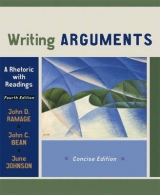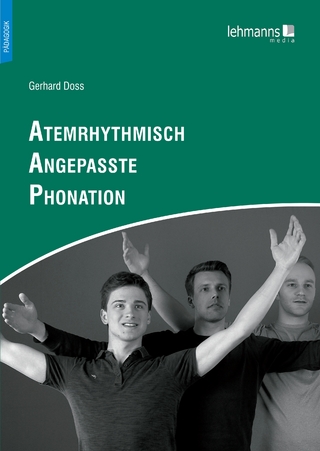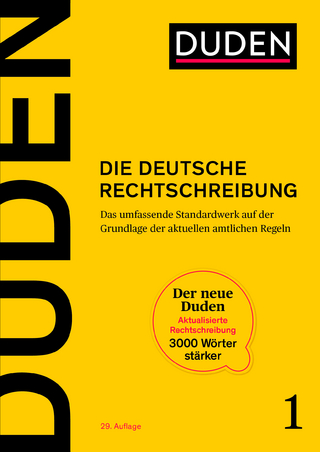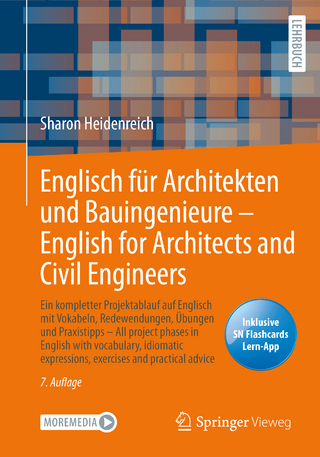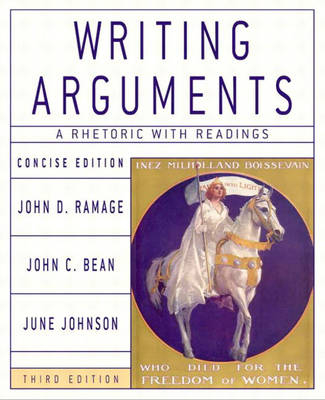
Writing Arguments
Pearson (Verlag)
978-0-321-16338-7 (ISBN)
- Titel erscheint in neuer Auflage
- Artikel merken
The market leader in argumentative rhetorics, Writing Arguments has proven highly successful in teaching students to read arguments critically and to produce effective arguments of their own.
In its student-friendly tone, clear explanations, high-interest readings and examples, and well-sequenced critical thinking and writing assignments, this concise text offers a time-tested approach to argument that is interesting and accessible to students and eminently teachable for instructors.
Throughout the book, the authors approach argument rhetorically by emphasizing audience and context at every stage of the construction of an argument. Writing Arguments moves students beyond a simplistic debate model of argument to a view of argument as inquiry and consensus-building as well as persuasion, in which the arguer negotiates with others in search of the best solutions to problems.
* denotes selections new to this edition. Most chapters end with “Conclusion.”I. OVERVIEW OF ARGUMENT.
1. Argument: An Introduction.
What Do We Mean by Argument?
Argument Requires Justification of Its Claims.
Argument Is Both a Process and a Product.
Argument Combines Truth Seeking and Persuasion.
Argument and the Problem of Truth.
A Successful Process of Argumentation: The Well-Functioning Committee.
Gordon Adams, Petition to Waive the University Math Requirement (Student Essay).
2. Reading Arguments.
Why Reading Arguments Is Important for Writers.
Strategy 1: Reading as a Believer.
*Lisa Turner, Playing with Our Food.
Strategy 2: Reading as a Doubter.
Strategy 3: Exploring How Rhetorical Context and Genre Shape the Argument.
Strategy 4: Seeking Out Alternative Views and Analyzing Sources of Disagreement.
*Council for Biotechnology Information, Would It Surprise You That Growing Soybeans Can Help the Environment? (Advocacy Advertisement).
*Council for Biotechnology Information, Biotech Labeling: Why Biotech Labeling Can Confuse Consumers.
*An Analysis of the Sources of Disagreement between Lisa Turner and the Council for Biotechnology Information (Sample Analysis Essay).
Strategy 5: Using Disagreement Productively to Prompt Further Investigation.
3. Writing Arguments.
Who Writes Arguments and Why?
Tips for Improving Your Writing Process.
Using Exploratory Writing to Discover Ideas and Deepen Thinking.
Shaping Your Argument: Classical Argument as a Planning Tool.
Using Exploratory Writing to Discover Ideas and Deepen Thinking: Two Sets of Exploratory Tasks.
Writing Assignments for Chapters 1-3.
II. PRINCIPLES OF ARGUMENT.
4. The Core of an Argument: A Claim with Reasons.
The Rhetorical Triangle.
Issue Questions as the Origins of Argument.
Difference Between a Genuine Argument and a Pseudo-Argument.
Frame of an Argument: A Claim Supported by Reasons.
Applying This Chapter's Principles to Your Own Writing.
Applying This Chapter's Principles to Reading Arguments.
5. The Logical Structure of Arguments.
Overview of Logos: What Do We Mean by the “Logical Structure” of an Argument?
Adopting a Language for Describing Arguments: The Toulmin System.
Using Toulmin's Schema to Determine a Strategy of Support.
The Power of Audience-Based Reasons.
6. Using Evidence Effectively.
General Principles for the Persuasive Use of Data.
Rhetorical Understanding of Evidence.
Gathering Evidence.
Writing Your Own Argument: Using Evidence Persuasively.
Writing Assignments for Chapters 4-6.
David Langley, “Half-Criminals” or Urban Athletes? A Plea for Fair Treatment of Skateboarders (Student Essay).
7. Moving Your Audience: Ethos and Pathos.
Ethos and Pathos as Persuasive Appeals: An Overview.
How to Create an Effective Ethos: The Appeal to Credibility.
How to Create Pathos: The Appeal to Beliefs and Emotions.
Using Images for Emotional Appeal.
8. Accommodating Your Audience: Treating Differing Views.
One-Sided versus Multi-Sided Arguments.
Determining Your Audience's Resistance to Your Views.
Appealing to a Supportive Audience: One-Sided Argument.
Appealing to a Neutral or Undecided Audience: Classical Argument.
Appealing to a Resistant Audience: Delayed Thesis or Rogerian Argument.
Ellen Goodman, Minneapolis Pornography Ordinance.
*Rebekah Taylor, Letter to Jim (Student Essay).
Writing Assignments for Chapters 7 and 8.
9. Conducting Visual Arguments.
Understanding Design Elements in Visual Argument.
The Compositional Features of Photographs and Drawings.
The Genres of Visual Argument.
Constructing Your Own Visual Argument.
Using Graphics as Visual Arguments.
Writing Assignment for Chapter 9.
III. ARGUMENTS IN DEPTH: SIX TYPES OF CLAIMS.
10. An Introduction to Types of Claims.
An Overview of the Types of Claims.
What Is the Value of Studying Claim Types?
11. Categorical and Definition Arguments: X Is (Is Not) a Y.
An Overview of Categorical Arguments.
Simple Categorical Arguments.
An Overview of Definitional Arguments.
The Criteria-Match Structure of Definitional Arguments.
Conceptual Problems of Definition.
Kinds of Definitions.
Strategies for Defining the Contested Term in a Definitional Argument.
Conducting the Match Part of a Definitional Argument.
Writing a Definitional Argument.
Questioning and Critiquing a Definitional Argument.
Readings.
*Jack K. C. Chiang, “Why Not Taiwan?”
Kathy Sullivan, Oncore, Obscenity, and the Liquor Control Board (Student Essay).
Writing Assignment for Chapter 11.
12. Causal Arguments: X Causes (Does Not Cause) Y.
An Overview of Causal Arguments.
The Nature of Causal Arguing.
Describing a Causal Argument in Toulmin Terms.
Three Methods for Arguing That One Event Causes Another.
Glossary of Terms Encountered in Causal Arguments.
Organizing Your Causal Argument.
Questioning and Critiquing a Causal Argument.
Readings.
Daeha Ko, The Monster That Is High School (student essay).
*United Way, “Kids Who Do Not Participate” (Advocacy Advertisement).
Writing Assignment for Chapter 12.
13. Resemblance Arguments: X Is (Is Not) Like Y.
An Overview of Resemblance Arguments.
Arguments by Analogy.
Arguments by Precedent.
Organizing a Resemblance Argument.
Questioning and Critiquing a Resemblance Argument.
Readings.
*Meg Matthews, Whales Need Silence (Student Essay).
*Jean Arbeiter, “Iraq War Plans.”
Writing Assignment for Chapter 13.
14. Evaluation and Ethical Arguments: X Is (Is Not) a Good Y; X Is Right (Wrong).
An Overview of Evaluation Arguments.
Criteria-Match Structure of Evaluation Arguments.
Conducting a Categorical Evaluation Argument.
An Overview of Ethical Arguments.
Major Ethical Systems.
Conducting an Ethical Argument.
Common Problems in Making Evaluation Arguments.
Organizing an Evaluation Argument.
Critiquing a Categorical Evaluation.
Critiquing an Ethical Evaluation.
Readings.
*Tiffany Anderson, A Woman's View of Hip Hop (Student Essay).
Dr. Ezekiel Emanuel, Eight Is Too Many: The Case Against Octuplets.
Writing Assignment for Chapter 14.
15. Proposal Arguments: “We Should (Should Not) Do X.”
The Nature of Proposal Arguments.
The Structure of Proposal Arguments.
Special Concerns for Proposal Arguments.
Developing a Proposal Argument.
Proposal Arguments as Advocacy Posters or Advertisements.
Using the Claim-Type Strategy to Develop a Proposal Argument.
Using the “Stock Issues” Strategy to Develop a Proposal Argument.
Organizing a Proposal Argument.
Questioning and Critiquing a Proposal Argument.
Writing Assignment for Chapter 15.
Reading.
*Mark Bonicillo, A Proposal for Universal Health Insurance in the United States (MLA-Style Student Research Paper).
APPENDICES.
Appendix 1: Informal Fallacies.
The Problem of Conclusiveness in an Argument.
An Overview of Informal Fallacies.
Appendix 2: A Concise Guide to Evaluating and Documenting Sources.
Evaluating Web Sites and Other Sources.
* National Resources Defense Council Web Site, Spread of Active Sonar Threatens Whales.
How to Avoid Plagiarism.
Understanding Parenthetical Citation Systems with Bibliographies.
Understanding MLA Style.
Understanding APA Style.
*Megan Matthews, Sounding the Alarm: Navy Sonar and the Survival of Whales (APA-Style Student Research Paper).
| Erscheint lt. Verlag | 27.1.2004 |
|---|---|
| Sprache | englisch |
| Maße | 191 x 232 mm |
| Gewicht | 526 g |
| Themenwelt | Geisteswissenschaften ► Sprach- / Literaturwissenschaft ► Sprachwissenschaft |
| ISBN-10 | 0-321-16338-9 / 0321163389 |
| ISBN-13 | 978-0-321-16338-7 / 9780321163387 |
| Zustand | Neuware |
| Haben Sie eine Frage zum Produkt? |
aus dem Bereich
